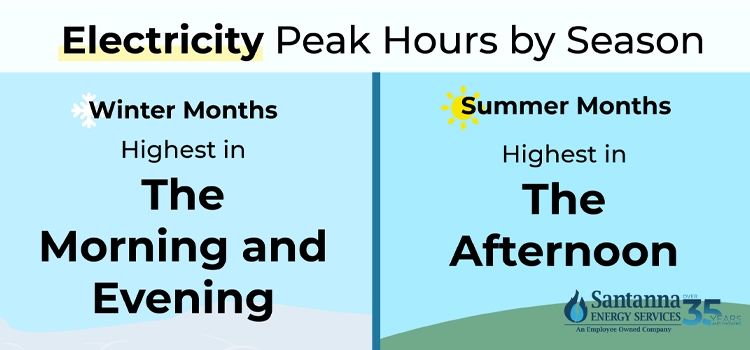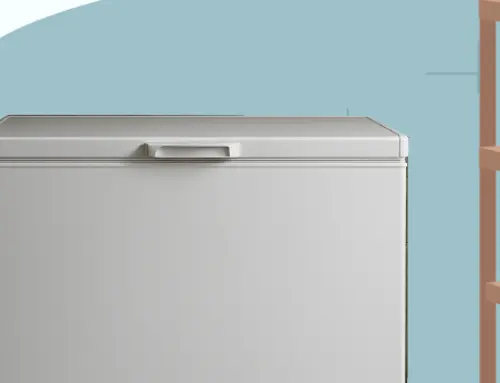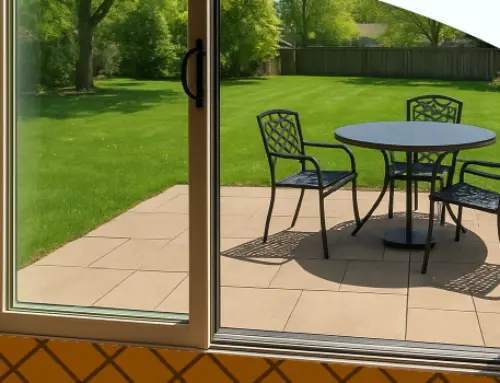What is a Kilowatt-hour and Why Does it Matter?
by Greg Rabaey
8.7 min read

Have you ever wondered what a kilowatt hour is and why it matters to your energy consumption? If you have, you’re not alone! Learning what a kilowatt-hour is, isn’t something you might learn in school. This can make understanding how this metric applies to your energy bill, and how it relates to your energy consumption pretty confusing. Luckily for you, we have just what you need to put all your questions about kilowatt-hours to rest. So, let’s dig into all things kilowatt-hour and find the root of why this electricity unit is so important!
What is a kilowatt-hour?
A kilowatt–hour is a unit of measurement that measures how much electricity appliances uses over time. Understanding this can be helpful in understanding your home’s monthly energy efficiency and can help make choosing your energy plans or appliances easier! A single kilowatt-hour represents the amount of energy used to generate 1,000 watts of power for one hour. Let’s think about it this way: if it takes 1,000 watts of energy to power one light bulb for an hour, if you run 10 light bulbs for one hour, it will equal 10 kWh of energy.
Kilowatt-hour vs. kilowatt
Still a little confused? Don’t panic! To further explain the importance of a kilowatt-hour, we should understand how it differs from a kilowatt. While both the kilowatt-hour and kilowatt are both related to electricity, they both measure different things! In the simplest terms, a kilowatt measures how quickly electricity is being used the moment you use an appliance. In contrast, a kilowatt (kW) is a unit of power. It measures how much electricity you use over time. For example, if you leave a light on for one hour, it will use 1 kWh of energy.
What can 1 kWh power?
One kilowatt-hour (kWh) of energy is equivalent to powering a 100-watt light bulb for ten hours. But what else can 1 kWh power? Let’s explore some examples:
- A laptop can run for about 10 hours.
- Running an average refrigerator for 3-4 hours.
- Baking at 350°F for approximately 20-30 minutes.
- Watching television for around 10-12 hours on a typical flat-screen TV.
Keep in mind that these estimations are approximate and can vary based on the efficiency of the appliances and the power they consume. Different devices have different power requirements, so the actual usage can vary widely.
How many kilowatt-hours do common household items use?
The amount of kilowatt-hours your common household items use will vary depending on their overall energy consumption and their usage time. However, there are ways to find rough estimates! Using RapidTables energy consumption calculator, we’ve generated some estimates on how many kilowatt-hours common household items use:
| Item | Power Consumption In Watts | Hours Used Per Day | Monthly Estimated Kilowatt-Hours |
| Laptop | 50 | 8 | 12 kWh/Month |
| Television | 70 | 8 | 16.5 kWh/Month |
| Air Conditioner | 600 | 12 | 216 kWh/Month |
| Space Heater | 2000 | 12 | 720 kWh/Month |
| Clothes Dryer | 3000 | 12 | 720 kWh/Month |
To further your impact on boosting the energy efficiency in your home, consider choosing EnergyStar-certified products to increase your dedication to making the planet a healthier place!
How Many kWh Does a House Use Per Month?
The amount of energy a house uses in a month can vary greatly depending on factors such as the size of the house, number of occupants, and usage habits. However, according to the E.IA, the average American home uses 886 kWh per month. With major appliances like refrigerators, lighting, and heating and cooling systems accounting for the biggest energy consumers in your home, it might be hard to find ways to reduce your energy consumption. Not to worry, here are the quickest ways you can reduce your energy consumption and make your home more energy efficient:
- Switch to LED Bulbs: Replace traditional incandescent bulbs with energy-efficient LED bulbs. LED light bulbs use 75% less energy and last 25 times longer than incandescent bulbs!
- Unplug Electronics: Turn off and unplug electronics when not in use. Many devices still consume power even if they’re not in use! It might not seem like much but, you can save up to $100 a year from unplugging certain devices.
- Adjust Thermostat Settings: Lowering the thermostat in winter and raising it in summer by a few degrees can significantly reduce heating and cooling energy usage.
- Weatherproof and Winterize Your Home: Weatherproofing your home is a great way to conserve energy in your home! Performing tasks like sealing drafts around windows and doors, applying weatherstripping, and protecting your pipes to prevent heat loss or gain can save you energy in the long run.
- Limit Shower Time: Shortening shower time and using low-flow showerheads can save both water and energy used to heat the water.
- Utilize Natural Light: Make the most of natural daylight by opening curtains or blinds during the day, reducing the need for artificial lighting.
- Plant Trees/Shrubs: Strategically planting trees or shrubs around your home can provide natural shade, reducing the need for excessive energy usage.
- Power Strips: Use power strips to easily turn off multiple electronics when not in use, preventing standby power consumption.
What determines my electricity cost per kWh on my energy bill?
The cost of electricity per kilowatt-hour (kWh) on your energy bill is determined by several factors. Depending on your energy plan type, the primary factor is the amount of energy you consume, as this directly affects your overall usage and ultimately your bill. If you’re concerned about overusing on your energy bill, some energy providers offer an Unlimited Energy Plan that lets you use as much energy as you want; you just must pay a set monthly supply charge**. Additionally, factors such as the time of day you use electricity, any applicable taxes or fees, and the type of pricing plan you have with your energy provider can also impact the cost per kWh on your bill.
If you’re looking to learn more about your energy options and what plan is right for you for your energy consumption, consider downloading our FREE eBook about everything you need to know about choosing an energy plan!
Using kWh to find your monthly usage
Understanding how your kilowatt-hours are being measured can help you understand how much energy your appliances are using and how much energy you’re using to determine your monthly usage. How can you figure out how many kilowatt hours your appliance is using as simple as possible? Let’s use an example, your typical oven uses around 2,000-5,000 watts of energy every time you use it. Now, if you have your 4,000 watts an hour oven on for 2 hours since a single kilowatt-hour represents 1,000 watts of energy, you will be using 8 kilowatt-hours of energy! Need a little bit more help? Check out NEC Co-Ops Energy’s conversion chart to help!
When it comes to your energy bill, most eco-friendly energy suppliers, like Santanna, calculate their monthly estimates based on kilowatt-hours. So how can you find out the monthly cost of your energy plan? First, to figure this out, you should find out your average kWh usage. First, to figure this out, you should find out your average kWh usage. If you don’t know this info off the top of your head, you can find this information on your latest energy bill or simply call your energy provider!
Hypothetically, let’s say you’re looking for an energy plan and your monthly energy usage is consistent at 500 kWh. Next, you find a plan you like that costs 7 cents per kWh. To find out what you owe for the monthly supply portion of your bill, and assuming this plan doesn’t come with a monthly fee or delivery fee, you simply multiply the number of kilowatt-hours by your plan rate. So, in this scenario, by multiplying 500 kWh by 7 cents, your monthly supply cost would be $35.00 a month! *
Understanding your energy consumption
Now that you know how much you’ll be paying for your energy, let’s explore the benefits of this electrifying knowledge! Knowing how much energy you consume can help you understand how much power you’re using and where it’s being used. This can also provide a good framework on how you can monitor your energy consumption and you can implement strategies on where you can reduce your energy usage and identify areas of waste. Finally, this knowledge allows you to stay informed as a consumer when choosing your renewable energy choice and can help you gauge the environmental impact you’re having on the world!
Other measures of electricity: amps, ohms, volts and watts
Other than kilowatt-hours Electricity is measured and characterized by various units and parameters, each serving distinct purposes:
- Amps measure electric current, indicating the flow rate of electrons through a conductor. Amperes are fundamental in determining the amount of current an electrical system can safely handle, crucial for circuit design and safety considerations. Some common household items that use amps are a hairdryer and a vacuum cleaner.
- Ohms denote electrical resistance, determining how much a material opposes the current flow. Some common household items that use ohms as a measurement are electric heaters and toasters.
- Volts measure electrical potential or voltage, representing the force moving electrons through a circuit. Some common household items that use ohms as an electrical measurement are electrical outlets and light fixtures.
- Watts is the unit of electrical power equal to one ampere under the pressure of one volt. Common household items that use watts include televisions and refrigerators, among others, where the wattage indicates their power consumption or output.
Understanding units like amps, ohms, volts, and watts is integral in comprehending electrical systems and managing household energy consumption efficiently. By familiarizing yourself with these units, you can make informed choices to optimize energy usage.
Now that you have what it takes to understand your energy, go out there and make eco-friendly decisions that are right for you!
Santanna Energy Services is a supplier of renewable energy solutions in the United States, providing services to Illinois, Indiana, Pennsylvania, Michigan, and Ohio. We provide a wide range of energy services and products to meet the needs of both residential and small business customers. Our mission is to provide innovative and cost-effective energy solutions that will help our customers achieve their energy goals. With over 35 years of experience, we are committed to creating life-long relationships by providing quality service to customers, communities, and employees.
*Prices vary by supplier, location, delivery, and tax charges.
Greg Rabaey, the CEO of Santanna Energy Services, is a forward-thinking leader with a wealth of experience in the energy industry. With a solid educational foundation in mathematics, computer science, and physics, including a Ph.D. in Physics from the University of Arizona, Greg's career spans over 30 years in technology and energy. Under his guidance, Santanna Energy Services has evolved into a consumer-centric powerhouse, providing electricity and natural gas to countless homes across the Midwest. Greg's strategic acumen, deep commitment to his team and customers, and passion for innovation have been instrumental in the company's growth. His visionary leadership has led Santanna to become an industry innovator, offering a range of earth-friendly and unlimited energy options, setting new standards in environmentally conscious energy solutions for clients. Beyond the boardroom, he actively contributes to his community, embodying his dedication to driving positive change, both professionally and personally.









